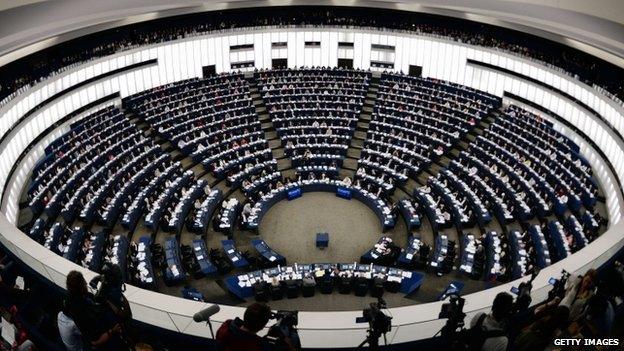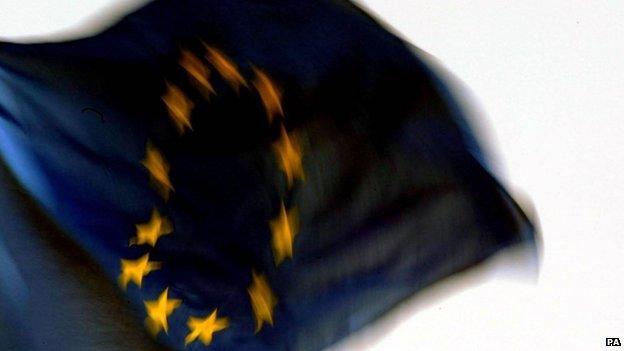To vote, or not to vote
- Published

Birds eye view: The European Parliament in Strasbourg
Consider the European dimension. If you vote tomorrow in Scotland, you are helping to elect a parliament of 751 MEPs, representing 500 million citizens in 28 states.
You will be helping to determine the nature of that parliament: whether it is free trade or protectionist; whether it is for ever closer European Union or abolition of the EU; whether it is broadly left, right, centre or rainbow.
You will also be helping, indirectly, to choose the next president of the European Commission. You will be influencing issues like employment rights, economic co-operation and the future of the European Union. So nothing big, then.
Take the UK picture. In addition to the above, you may be offering pointers to the next UK General Election. How will the coalition parties fare? Labour? What does it signify if UKIP do well across the UK as a whole?
Then take the Scottish picture. In addition to the above, you may be offering indicators to the independence referendum. Will the SNP top the poll again? If they do, does that add momentum to their referendum pitch - or will that rely upon different factors?
Choice for voters
What happens to the other parties with members at Holyrood? Will UKIP end up with their first elected politician, of any description, in Scotland?
Alternatively, if UKIP do well in England but fail to break through in Scotland, does that signal a differing approach to politics north and south of the Border? Would that have an impact on the referendum - or, again, is that a distinctive choice?
Big issues, global, national. Yet the choice for voters in Scottish polling stations tomorrow is straightforward. There are nine parties contesting the elections in Scotland. They have each set out six candidates in an ordered list, from one to six.

Voeters in Europea will go to the polls in the coming days
If you vote, you choose a party. The votes are counted - and parties are then allocated seats in rough proportion to their voting share.
Now, the count is not quite as simple as that. It uses a system called D'Hondt, named after a Belgian mathematician (dashed clever, those Belgians.)
At each stage, a party's total vote is divided by one plus the number of seats they have gained thus far. So, at stage one, the party with the most votes gets a seat. At stage two, that party's vote is divided by two (one plus their one seat) and so on.
This rewards parties with the highest average. In essence, what matters is not just a party's raw vote but how it measures up in balanced competition with rivals over successive stages.
However, votes do not need to worry unduly about that. You just make your choice and cast your vote. Or not as the case may be.